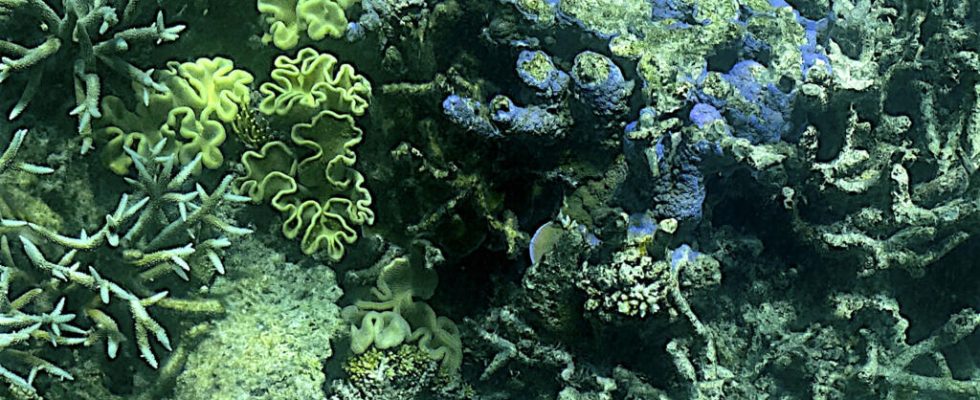Among the victims of the global wave of coral bleaching, the largest and most famous coral reef in the world, the Great Barrier Reef which runs along the Australian east coast for more than 2,300 km. The authority in charge of its protection confirmed this Wednesday April 17 that the Great Barrier Reef is currently experiencing the worst bleaching episode ever observed.
3 mins
The Great Barrier Reef is now whitening almost visibly, a phenomenon triggered by ocean warming, which this year affects three-quarters of the corals observed. “ The cumulative impact suffered by the barrier this summer was higher than in previous summers », Underlines in a press release the Great Barrier Reef Marine Park Authority, which depends on the Australian federal government.
Not only is the current episode the most intense ever recorded, it is also the fifth, in barely eight years, with waves now too frequent to allow the corals to rebuild, recalls our correspondent in Sydney, Grégory Plesse.
The Great Barrier Reef, which stretches 2,300 kilometers along the Queensland state coast, is often considered the largest living structure in the world. It is home to extremely rich biodiversity, with more than 600 species of coral and 1,625 species of fish.
Some types of corals on the verge of extinction
And if in places, certain damaged coral reefs, the most resistant to high temperatures, have regained vigor, there are, as Dave Wachenfeld, director of research at the Australian Institute of Marine Sciences, points out, limits to resilience. .
Thus, almost three quarters of reefs are currently affected, and certain types of corals, such as acropores, are now on the verge of extinction. And aerial observations showed that about 730 of the more than 1,000 reefs observed had bleached, the Great Barrier Reef Marine Park Authority said.
This phenomenon is caused by an increase in water temperature which causes the expulsion of symbiotic algae giving the coral its bright color. If high temperatures persist, the coral turns white and dies.
Read alsoBleaching of the Great Barrier Reef in Australia: “A sort of divorce between algae and coral”
Inscription on the list of world heritage sites in danger
L’Australia has already invested some 5 billion Australian dollars – or 3 billion euros – to improve water quality, reduce the effects of climate change and protect endangered species. Thanks to this, UNESCO had in August 2023 provisionally given up on including the Great Barrier on the list of world heritage in danger, as it had threatened to do since 2021. But Australia is also one of the largest emitters of greenhouse gas, one of the largest exporters of natural gas and coal, and has only very recently set objectives, considered unambitious, to achieve carbon neutrality.
The UNESCO World Heritage Committee will re-examine the case of the Great Barrier Reef next July. It should logically recommend its inscription on the list of world heritage sites in danger.
The phenomenon is not confined to Australia: this Monday, April 15, the American Oceanic and Atmospheric Observation Agency announced that the planet was experiencing its second largest episode of coral bleaching in ten years.
Read alsoCoral reef survival threatened by new mass bleaching
